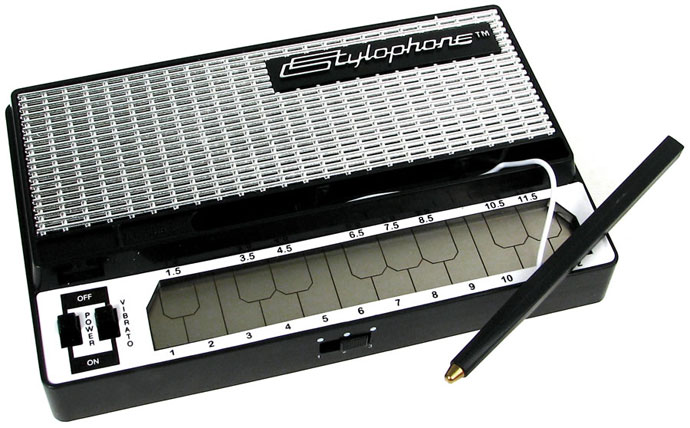
Embark on a captivating exploration of a musical invention that transcended its size to make a lasting impact on the world of music. In this article, we’ll uncover the intriguing journey of the Stylophone, an electronic instrument that emerged from the mind of electrical engineer Brian Jarvis. From its inception to unexpected appearances in iconic musical moments, the Stylophone’s story is a testament to the fusion of technology and musical creativity. Join us as we unravel the narrative behind this small yet significant player in the realm of electronic music. Already have a Stylophone? Check out our free Stylophone Tabs, so you can play your favorite songs.

When was the Stylophone invented?
The Stylophone, a quirky and iconic electronic musical instrument, was invented by Brian Jarvis in 1967. Brian Jarvis was an electrical engineer who worked for Dubreq, a British electronic musical instrument company. The Stylophone was originally intended as a miniature and portable alternative to traditional electronic keyboards, and its unique design quickly captured the public’s imagination.
There are several different types of Stylophones for sale, including the “Stylophone Retro Pocket Synth” and the “STYLOPHONE GEN X-1 Portable Analog Synthesizer“
The invention of the Stylophone can be traced back to the desire for a simple and accessible musical instrument that anyone could play, regardless of their musical background. Jarvis’s vision was to create an instrument that was not only compact and affordable but also fun and easy to use. The result was the Stylophone, a pocket-sized electronic keyboard that could be played with a stylus.
Introduced to the market in 1968, the Stylophone gained popularity for its novelty and distinctive sound. It featured a metal keyboard with only 20 or 28 small metal pads, and users could produce musical notes by touching the stylus to the pads. The sound was generated by striking a metal reed beneath each pad, creating a characteristic and somewhat futuristic tone.
One of the early models, the Stylophone 350S, became particularly popular due to its additional features such as a vibrato control and a built-in speaker. The instrument found its way into popular culture, making appearances in music, television, and even film. One of the most famous uses of the Stylophone is in David Bowie’s song “Space Oddity,” where it contributes to the distinctive and otherworldly sound of the track.
Stylophone Tabs (and other stylophone music) are often written in numbers rather than the letters. This article explains how to translate stylophone letters into number and vice versa.
While the Stylophone experienced a decline in popularity in the 1970s, it never faded into obscurity. Over the years, the instrument has seen revivals and adaptations, with various models and modern versions being released. The basic concept of the Stylophone has endured, and it continues to be appreciated for its nostalgic charm, simplicity, and the unique sound it brings to the world of electronic music.
In recent years, the Stylophone has been reissued, and enthusiasts can enjoy both classic models and updated versions with additional features. The invention of the Stylophone by Brian Jarvis in 1967 remains a testament to the creativity and innovation that can arise from the intersection of technology and music.
Most Famous Stylophone Players
What Popular Song uses Stylophone?
Is the Stylophone Hard to Play?
Is the Stylophone worth it?
A Guide to Cleaning Your Stylophone
